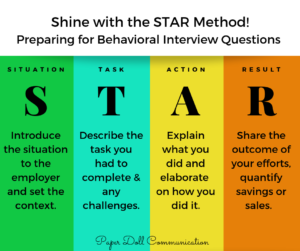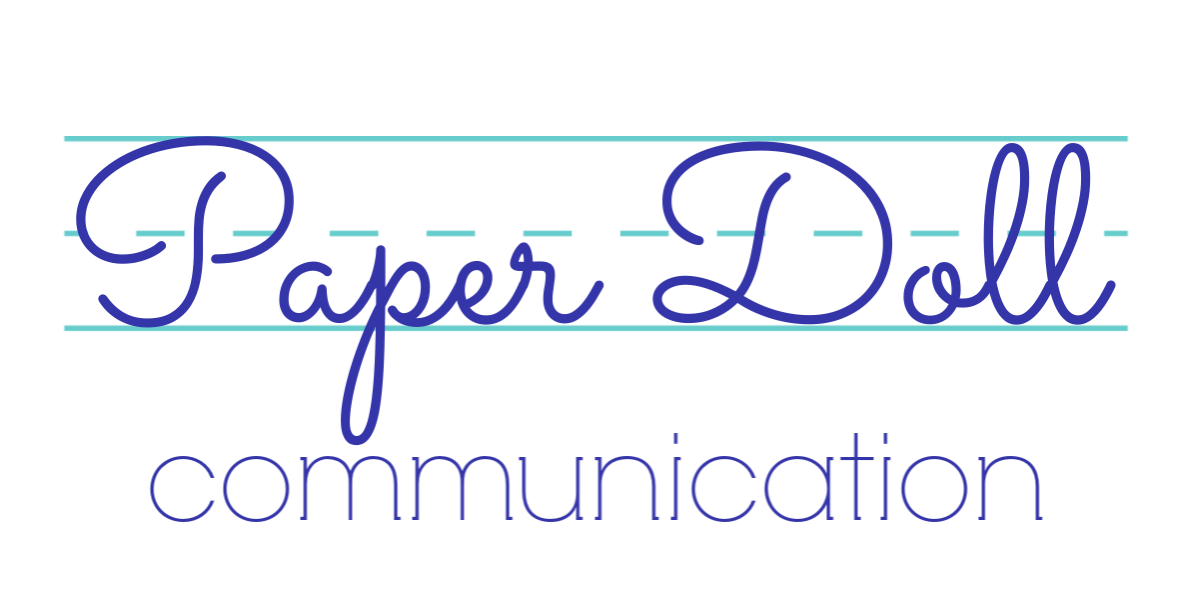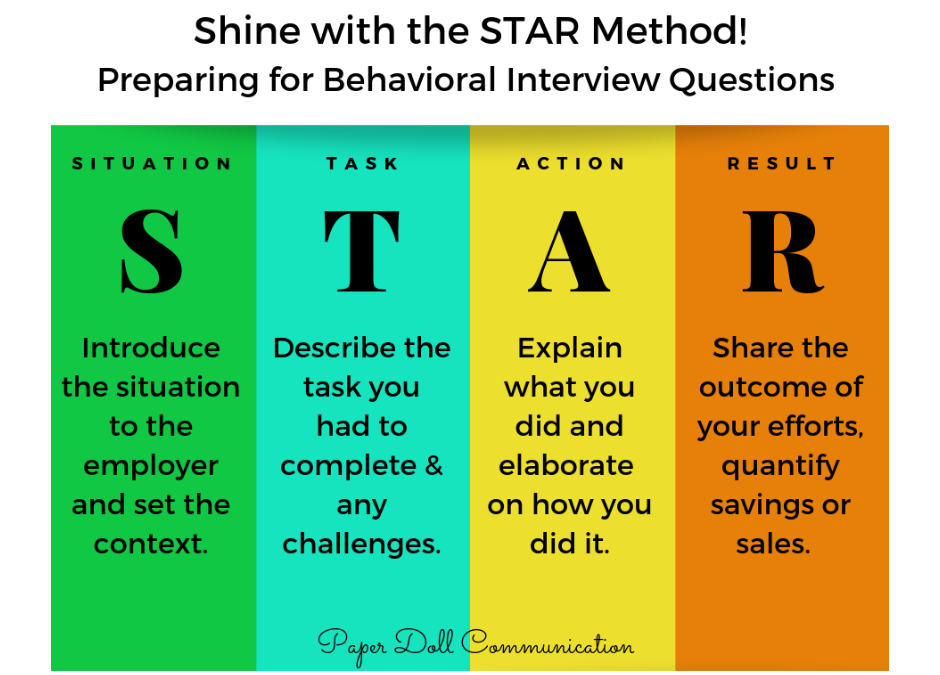Interviewing can be nerve-wracking. There is nothing worse than feeling at a loss, struggling to think of a good answer to a question – a second begins to feel like a minute! Preparation is the key to a good interview. You won’t sweat the interview if you prepare to shine with the STAR response technique.
Situation – Task – Action – Result
Many companies use the Behavioral Interviewing format to see if a candidate can demonstrate the skills necessary to be successful. The idea is that past behavior will demonstrate how you will perform in the future. Your goal is to prove you have right abilities through a detailed example.
Companies who use Behavioral Interviewing are measuring your soft skills, gaging your personal style and probing for shared values. They want to know how you deal with failure, work on a team, manage time, etc. So, some of these questions will be broad and others will be very specific to the role you want.
For example, everyone who applies for a job at The Widget Company may be asked “Tell me about a time you were under a lot of pressure. What was going on, and how did you get through it?” because adaptability is a core value, but only those applying for a client facing position may be asked, “Describe a time when you had to interact with a difficult client. What was the situation, and how did you handle it?”
Competency based questions usually start with phrases like, “Have you ever…”, “Tell me about a time…”, “Describe a situation when…”, “What do you do if…” or “Give me an example of…”.
Companies who use Behavioral Interviewing are measuring your soft skills, gauging your personal style and probing for shared values.
Your goal is to give a concrete example of your experience. You want to follow these 4 steps to describe in detail a specific time when you demonstrated the skill.
-
Situation: Introduce the situation.
Set the scene and provide contextual detail of the situation you were in. Be informative but be concise. Focus on the most pertinent details. You don’t want to give unnecessary information or a long backstory. You do however want to include any complexities or challenges. This will help set the stage for the results you achieved.
-
Task: Describe the task to complete or the problem to resolve.
Don’t skip ahead to the action you took. You want to highlight your role in the situation. If you were assigned the task by someone explain why. Describe your responsibilities and Include goals or performance metrics.
-
Action: Explain what you did.
Elaborate on how you did it – the steps you took to address the goal you were working towards or to address the problem. What resources or special knowledge did you utilize? Did you elicit the help of others? Did you do research? Create a plan? This is a chance to showcase problem solving and interpersonal skills. Did it require extra hours, new approaches?
-
Result: Share the outcome of your efforts.
This is the big finale. You want to wow them with impact. What did you achieve? Again, be detailed – book end the situation. What happened? How did the event end? Outline the accomplishments and quantify your positive results as much as possible – specific money saved, sales increases, reduced turn-over, exceeding goals, etc. Share any awards, accolades or positive feedback you received from peers, customers or higher-ups. When appropriate discuss any lessons learned or things you would do differently, but always end on a positive note.
Tips to Prepare
Responding to competency-based questions with the STAR format is a great way to showcase your abilities and past achievements. It’s a great idea to start your interview preparation with a list of your top accomplishments. You can then refer to this list as you craft your responses.
Review the job description’s requirements and the key competencies you list on your resume. Look over the company website to find their core values. These are the key soft skills they are going to ask you about. You can google each competency for sample interview questions. Then practice putting your responses into the STAR technique.



Recent Comments